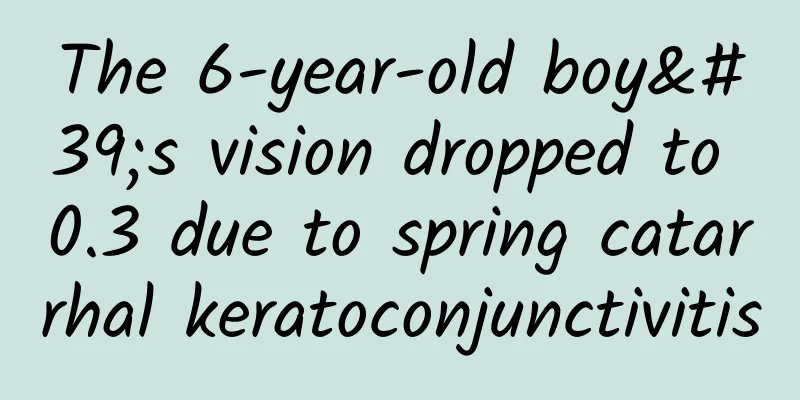What is ovarian granulosa cell tumor

|
The ovaries are one of the most important organs for female friends, but some female friends are found to have ovarian granular cell tumors when they go to the hospital for examination. However, many people do not know what ovarian granular cell tumors are, and of course they do not know how harmful ovarian granular cell tumors are. In fact, to put it simply, ovarian granular cell tumors are a type of ovarian tumor that has the possibility of becoming cancerous, so patients must not ignore it. Ovarian granulosa cell tumors can occur at any age, most of which occur after menopause and rarely during adolescence. There are often acute abdominal pain symptoms, which are prone to relapse in the late stage. Patients with granulosa cell tumors have a 10 times higher chance of developing endometrial cancer than normal people. Granular cell tumors are also prone to be combined with uterine fibroids, which further aggravates the symptoms of irregular vaginal bleeding. 6% of patients may have breast cancer. When the tumor occurs in postmenopausal women, postmenopausal bleeding is a typical clinical symptom, and other manifestations may also occur, such as breast swelling, breast enlargement, and a right shift in the squamous epithelium maturation index of vaginal smears. Since tumor cells can secrete estrogen, if the tumor occurs in prepubertal children, most of them will show precocious puberty. This type of precocious puberty is caused by tumor stimulation and is also called pseudo-precocious puberty. Clinically, it may manifest as breast enlargement, development of mons pubis, growth of pubic and axillary hair, abnormal development of internal and external genitalia, and even anovulatory menstruation. Some even experience excessively advanced development of height and bone age. If the tumor occurs in women of childbearing age, the estrogen secreted by the tumor will cause proliferative pathological changes in the endometrium. As the estrogen level in the body fluctuates, the endometrium will shed irregularly. Therefore, clinically, about 2/3 of patients will experience abnormal vaginal bleeding symptoms such as menorrhagia and prolonged menstruation. A small number of patients will also experience persistent amenorrhea or occasional irregular bleeding. 1. Tumor It is usually discovered by accident and may not cause any symptoms. 2. Menstrual changes Including excessive menstrual flow, irregular menstruation, prolonged menstrual duration, spotting, etc. 3. Postmenopausal bleeding In most cases, it is caused by benign diseases, but the possibility of malignancy cannot be ruled out, although sometimes the amount of bleeding is not much. 4. Abdominal pain When the tumor grows rapidly, the capsule ruptures, or the tumor twists, acute abdominal pain often occurs. Surgery is the most important treatment for granulosa cell tumor, and the scope of surgery varies according to the clinical stage. (1) Comprehensive staging surgery is performed for stage I, and intraoperative exploration is very important. The pelvis, abdominal organs, peritoneum, uterorectal fossa, etc. should be carefully examined, and biopsies should be taken from multiple locations. (2) All patients with stage II and above should undergo cytoreductive surgery, including removal of the entire uterus, bilateral adnexa, greater omentum, para-aortic and retroperitoneal lymph nodes, and visible metastases. (3) Surgical treatment of recurrent tumors: Patients with recurrent tumors should adopt a positive attitude and strive for another surgery, as surgery can improve the survival rate. Chemotherapy (1) Indications: ① Postoperative patients with stage I and II or above capsular rupture; ② Preoperative application for a small number of patients who are temporarily unable to undergo surgery due to other reasons. (2) Drug selection and combination: No regimen as sensitive as the BEP regimen for treating malignant germ cell tumors of the ovary has been screened out yet. Most of the chemotherapy regimens used should refer to those for malignant germ cell tumors or ovarian epithelial cancer. If a female friend has changes in menstruation or abdominal pain, she should be alert to whether she has ovarian granulosa cell tumor. If the patient's ovarian granulosa cell tumor is relatively small and the condition is relatively mild, the patient can take a more conservative treatment method and use medication first. However, when the condition worsens, surgical treatment is required for complete recovery. |
<<: What is the disease of female urethral granulation?
>>: How to effectively prevent and treat early pregnancy bleeding
Recommend
What is wrong with vulvar itching and vaginal pain?
Most female friends have suffered from gynecologi...
What causes cracked heels in women?
Many people will experience dry and cracked heels...
What causes female coccyx protrusion?
Generally speaking, it is quite common for women ...
What is the reason for girls to lose their hair
A beautiful and free-flowing hair is a standard c...
Student slimming during menstruation
How to slim down your legs during menstruation ha...
Leverage social media to build expertise
If you view social media as just a place to post ...
Will my belly swell up in the first half of pregnancy?
Pregnancy should be a very happy thing for expect...
Bleeding after abortion and its treatment
We all know that the incidence of diseases is inc...
Can the four dimensions tell whether a boy or girl is a boy?
With the continuous development of medicine today...
Can I have IVF if I have ovarian cysts?
Ovarian cysts do have an impact on the ovaries, b...
Did Choi Sulli commit suicide due to depression? What did Choi Sulli write in her suicide note?
After Sulli was confirmed dead, everyone was shoc...
What are the effects of drinking alcohol during menstruation?
Every menstrual period will also have a certain i...
Can I get pregnant if I don't ovulate normally?
The most important function of female ovaries is ...
Does high testosterone affect pregnancy?
Although the frequency of abortions is increasing...
What to do if your lower body is swollen, painful and itchy
When women experience swelling, pain and itching ...









